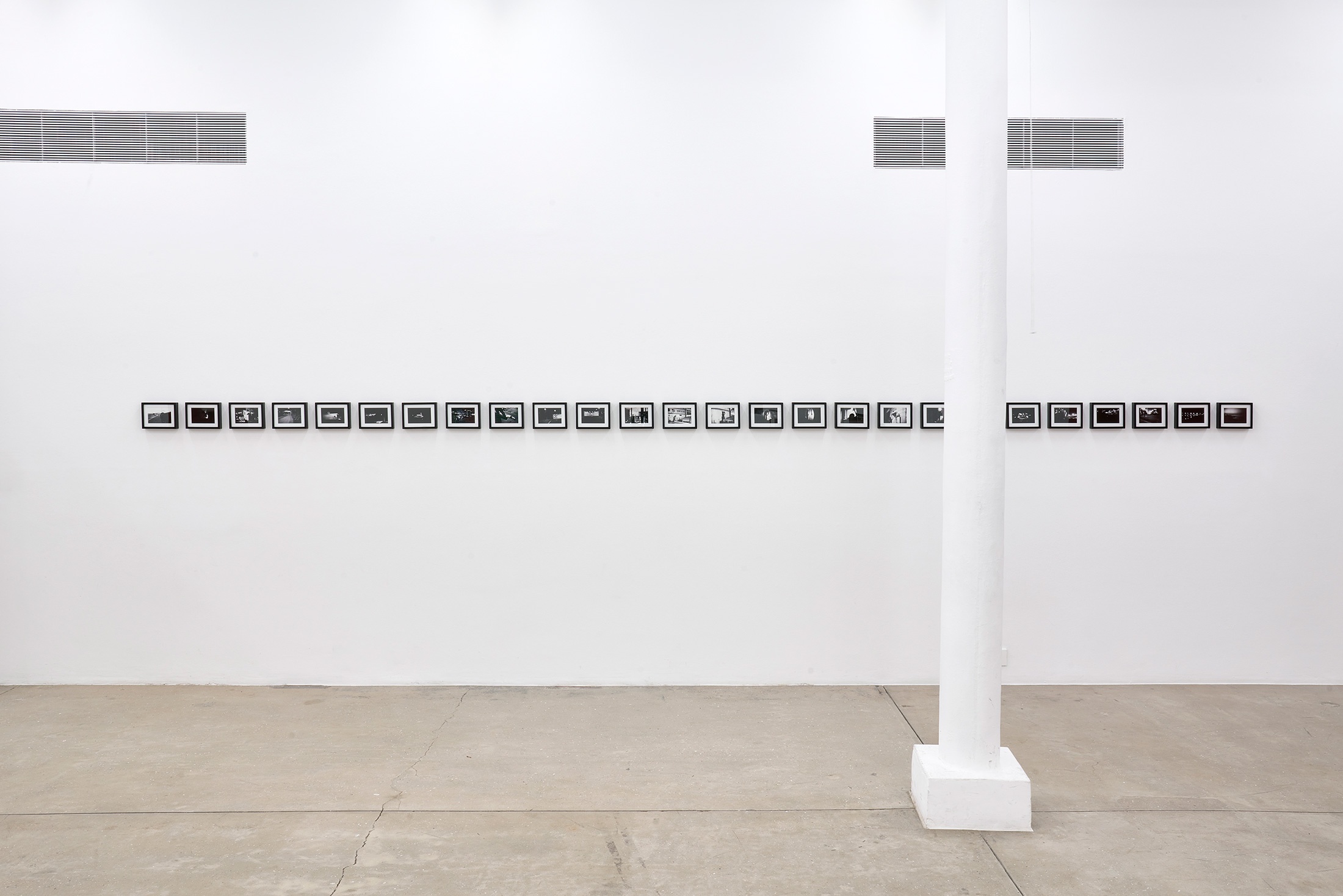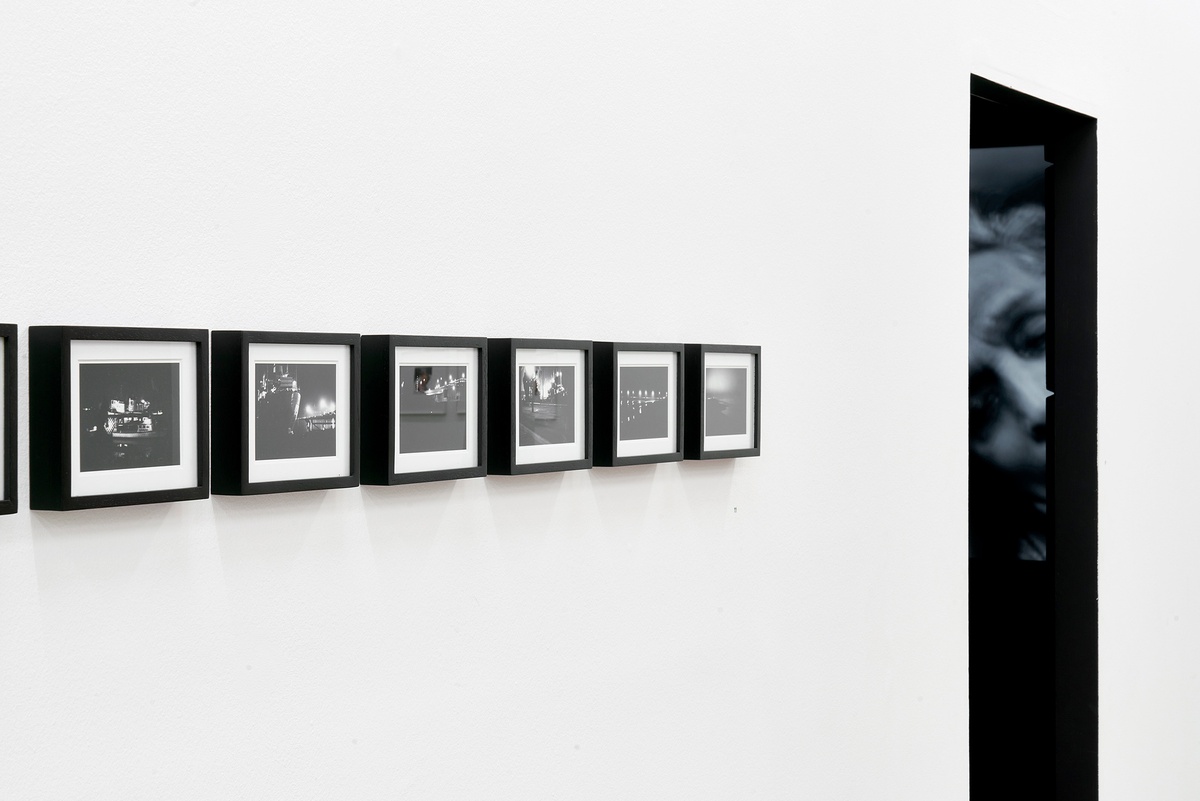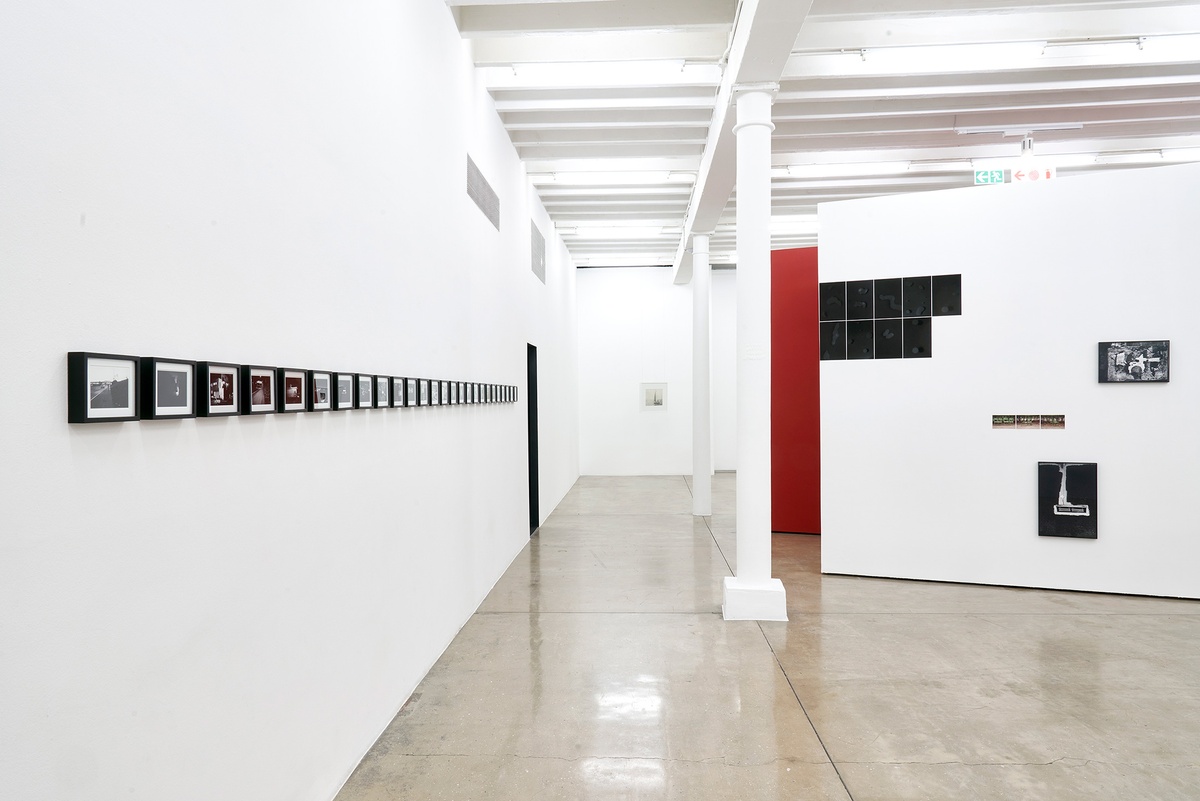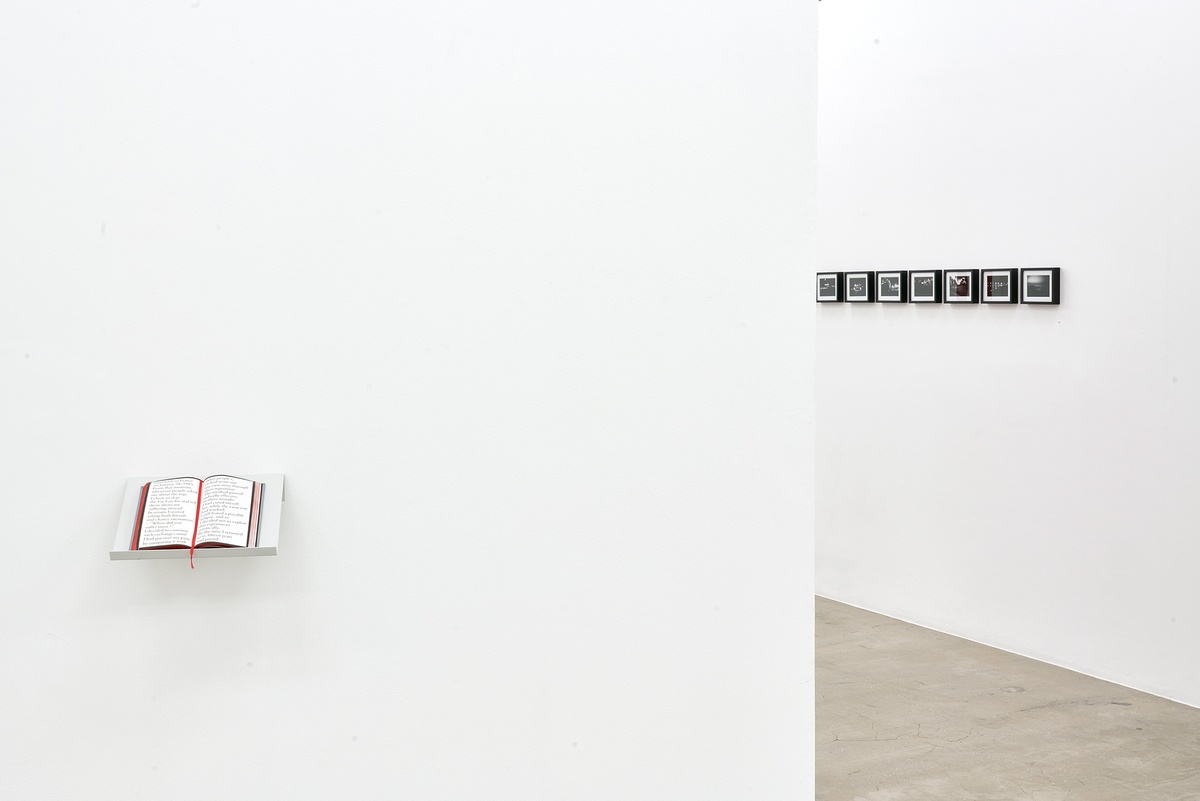Bas Jan Ader

In 1973, Ader performed the first part of a three-piece work. Titled In Search of the Miraculous (One Night in Los Angeles), the performance is recorded in a series of black-and-white photographs taken at night in the city’s outskirts; beneath an underpass, alongside a freeway, in a back alley. Together, they trace the figure of the artist (most often cast in silhouette) as he moves about the darkness with a flashlight. Ader plays the part of protagonist in an obscure Hollywood film, the plot uncertain, the genre undisclosed. On each photograph, Ader’s cursive scrawl transcribes lines from a 1957 song by the Coasters, Searchin’:
Well, now, if I have to swim a river
You know I will
And-a if I have to climb a mountain
You know I will
And-a if she’s a-hiding up on a-blueberry hill
Am I gonna find her, child, you know I will
‘Cause I’ve been searchin’ (gonna find her)
Oh, yeah, searchin’ (gonna find her)
“Ader’s search for the miraculous, his journeying in and around the sublime,” critic Bruce Hainley writes, “acknowledges even as it anticipates a contemporary yearning for the heroic, for art to tap into something greater and grander than the self-weary self… If he knew that his strivings were grand, he also knew that they might fail – or that he may fail them – yet he ventured on anyway, winnowing the materials of his art until it would go on without him, winnowed so that even the irony fades, only to return in unexpected ways.”
A study for In Search of the Miraculous (One Night in Los Angeles) was included in the exhibition You to Me, Me to You curated by Francisco Berzunza at A4.
b.1942, Winschoten; d.1975, Atlantic Ocean
Bas Jan Ader’s foundational works centre on a single verb: to fall. Following his relocation to America’s West Coast, the Dutch-born artist fell in with Los Angeles’ Conceptual art scene of the 1970s alongside the likes of Chris Burden and Jack Goldstein, with whom he shared a proclivity for precarious performances. The ‘fall’ works, which came to define his short career, distil Alder’s dedication to gestural simplicity, of action pursued to its logical limits. The artist falls from a roof, from his bicycle, from a tree branch hanging above a river – the performances compelling for the commitment with which the artist resigns his body to gravity’s pull. While parallels are often drawn between these performances and Buster Keaton’s deadpan acts, any humour in the ‘fall’ works is largely eclipsed by the violence of their fulfilment. Similarly opaque in their intentions, his proceeding works, which demonstrated less a fall than a falling apart, appear torn between self-seriousness and irony – the artist sends photographs of himself crying to friends, inscribes pop-song lyrics on pictures of late-night wanderings, proposes a work with the premise: “My body practising having been drowned.” This last has since gained the weight of prophecy. In 1975, Ader was lost at sea. His disappearance coincided with his final performance, the second work in a trilogy called In Search of the Miraculous. In death, Ader has become a modern-day myth: a tragic figure lost in pursuit of the transcendent. Popular imaginings, coloured by this romance, have further obscured the attitude with which his works were first conceived. The story of his death precedes his practice, circumscribing its resonances.





